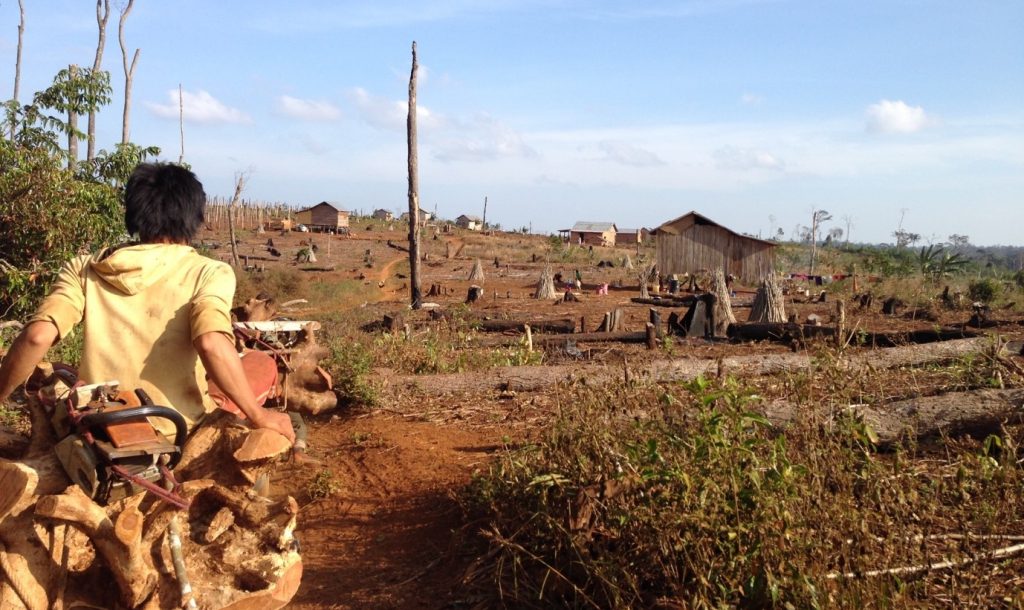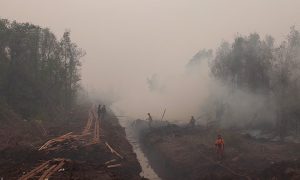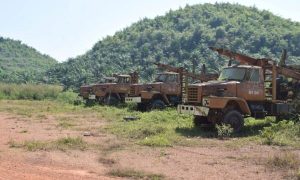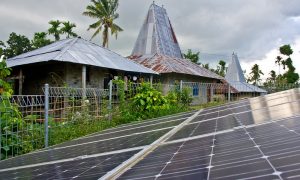Sango Mahanty. Unsettled Frontiers: Market Formation in the Cambodia-Vietnam Borderlands. Ithaca: Cornell, 2022
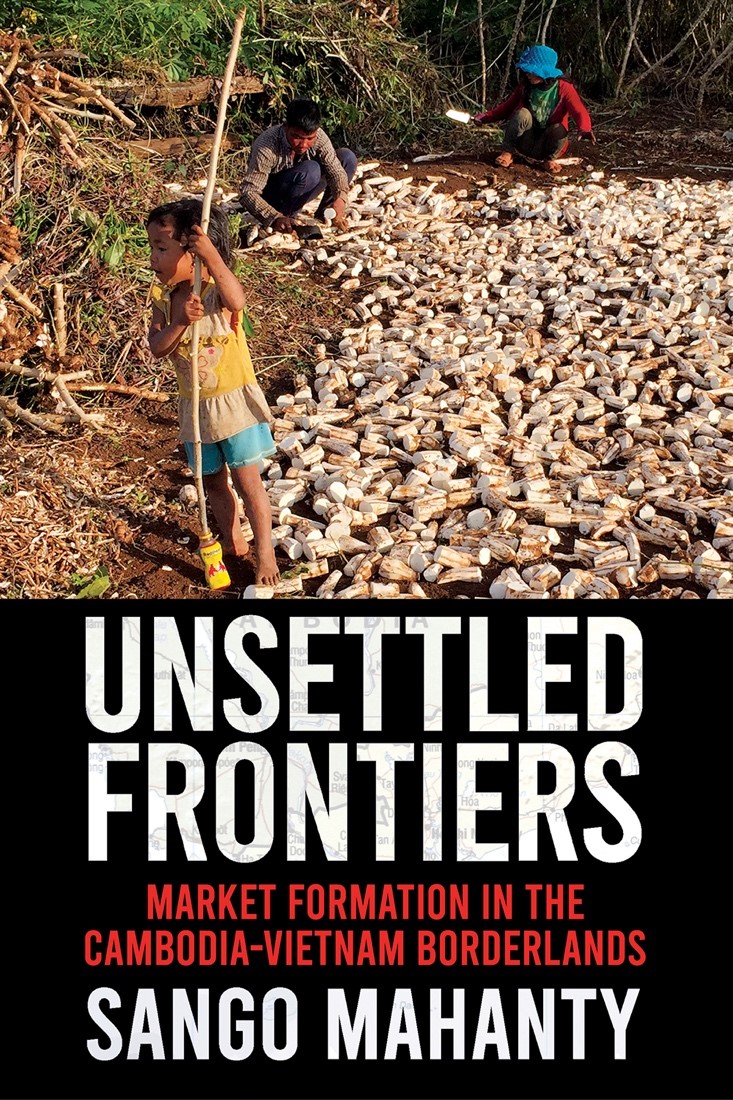
Cover of “Unsettled Frontiers: market formation in the Cambodia-Vietnam borderlands” (Image provided by Cornell University Press)
The book opens with Surya’s story, which encapsulates the dynamic processes that continue to shape the Cambodia-Vietnam borderlands.
I met Surya in 2013 in the village of Phum Prambei in Cambodia’s Mondulkiri Province, near the border with Vietnam. Aged fifty-five, Surya grew up in Vietnam’s Mekong Delta and identified as part of the Khmer ethnic minority known as Khmer Krom. He moved to Cambodia as a young man in the post-conflict period of the 1990s, where he first lived in the border province of Takau, south of the capital, Phnom Penh. In 1997, Surya migrated upland to Phum Prambei, which was then a small Indigenous Bunong village and Cambodian military outpost. He followed his cousin who had moved there earlier and was running a small coffee stall. For his first few years, Surya survived by fetching water for the military and by collecting and selling various forest products to Vietnamese buyers. In the year 2000, when the area was beset with rice shortages, a Bunong family accepted his offer to give them rice in exchange for enough land to build a house and establish a small farm. As more of his family members moved to Phum Prambei, Surya started to think of it as his home. Migration surged in 2005, when well-connected provincial elites started to grab and clear land around the village that they would resell to new settlers for USD 300 to 400 per hectare. Surya revealed that the “powerful ones” would take as many as one hundred to five hundred hectares each. New roads rapidly dissected the land and destroyed the Bunong community’s sacred burial forest. Even as a relatively new settler, Surya keenly felt this cosmological and material disturbance, recounting, “After the burial forest was burned and the stumps were dug out, I dreamed about ghosts from the forest with dark bodies who said they had nowhere to live.” (Personal and village names are anonymised)
Like other global frontiers, this borderland is a hotspot for migration, land claims, and markets for newly introduced commodities. Frontiers are often viewed as spaces of incorporation into global markets, where unequal relations of extraction, production, and exchange play out. In this book, I illuminate the crucial role of grounded social and material networks in these globally connected markets. By markets I mean commodity exchanges that are embedded within social, political-economic and material contexts. Given the substantial work on plantations in recent years, the book centres on the closely related issue of market engagements by small-scale farmers. I examine their networks with cross-border traders, factory operators, and state actors, among others. Case studies of rubber, cassava, and “green” commodities show how new commodities take hold and rework landscapes and lives. These stories speak to four focal themes that I touch on here: frontier dynamics, rural migration, the nexus between market formation and state formation, and the rhizomic nature of frontier markets.
Resource frontiers have long been a preoccupation for geographers, as sites of incorporation into global capitalism that are both relational and being constantly reinvented. I show that frontier markets do not simply transplant a capitalist mode of production, but emerge from diverse place-based negotiations and conditions to produce a locally contextualised form of (“actually existing”) capitalism. I suggest that these processes don’t just reinvent frontiers, but are increasingly taking them to the point of “rupture”. In an example from Mondulkiri province, the combination of depleted timber reserves and volatile rubber and cassava prices have significantly squeezed local livelihoods. Villagers have found ways to survive at the “edges” of rupture, often through mobility. Seasonal workers are able to circulate through different provinces and districts to follow available work. Yet these pressures also intensify the precarity of the poorest and most vulnerable families, adding to their debt and existing disadvantage in access to land. As disruptions accumulate over space and time, we see the emergence of more insidious forms of social and landscape rupture.
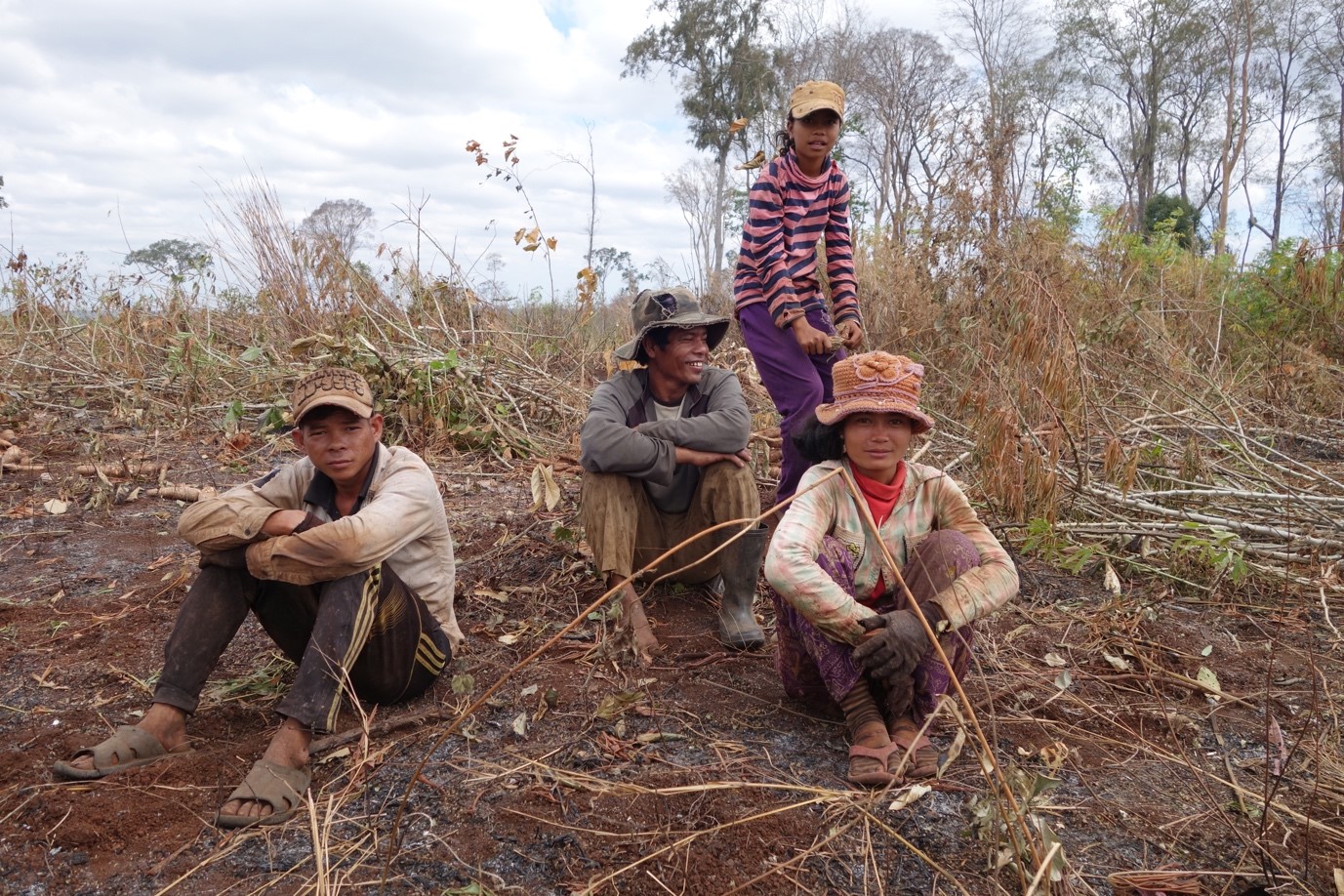
Seasonal workers harvest cassava in upland Mondulkiri for insecure daily wages (Photo: Sango Mahanty)
A second important theme in the book is frontier migration by settlers who are landless or land-poor. Case studies in the book show that when farmers migrate to areas of new land clearance, they also facilitate the geographic expansion of market-oriented agriculture. Here, migration is more than an individual choice; it is a multidimensional decision that interacts with individual and family interests as well as village networks. The quest for land has been a fundamental driver of frontier migration in Cambodia. Even where individuals face considerable hardship, settlers’ desire for land and secure livelihoods force them to stay. Village networks provide information about land opportunities and give support when migrants arrive in their new districts. In addition to taking commodity crops into new spaces, migration helps to expand the frontier market through land commodification—with migrants providing a ready market for newly cleared land. I explore these migration trajectories through case studies of individuals, and ties between their places of origin and destination.
The complex relationships between market formation and state formation are a third central theme, elaborated through the cases of French Indochinese rubber, and contemporary market interventions. Rubber served the French colonial state’s interest in expanding its revenue base, while helping the French to enhance territorial control at the margins and to subjugate frontier populations. The French administration played a crucial role in rubber production and trade through interventions in land, labour, and finance. Yet the colonial administration ultimately struggled to effectively govern the rubber industry, especially as large European investors became involved. The mutual dependencies of states and markets are also discussed in the case of biofuel enterprises in Vietnam, which were dramatically derailed by market uncertainties and state corruption cases. The inherent tendency of frontier markets to misfire and fracture poses a significant challenge for states, by making these markets a testing ground for state legitimacy. An historical case in point was the simmering labour unrest on French Indochinese plantations, which contributed to the revolutionary uprising that ultimately brought down colonial administration. These elements of ungovernability also challenge the notion that markets are a neutral and effective mechanism to meet rural development and environmental objectives, especially in frontier settings. The historical record—clearly evident in this part of the world—shows that states may be more adept at initiating market formation than managing the market’s unruly and uncertain outcomes. The outcomes are particularly devastating for vulnerable and minority populations.
The LSS2 dam blocked 2 of the Mekong River Basin's largest rivers, with serious social, economic and cultural impacts.
Hydro-power projects and cultural rights for Bunong communities in Cambodia
Because of the interconnected and evolving character of frontier markets, I liken them to a rhizome—Deleuze and Guattari’s heuristic device to explain the tangled and unbounded character of various social phenomena that lack clear organizational hierarchies and points of culmination. A rhizomic lens draws attention to how market networks sprawl without a distinct node of control, and without an end point or climax. Power is an implicit part of these networks and may be exercised indirectly through knowledge systems that underpin markets and through institutional apparatuses, or directly through coercion or violence. The rhizome heuristic helps to go beyond the common preoccupation with specific commodity networks and value chains, to consider the interactions between disparate commodity networks, and how these put markets in a continual state of flux without a defined beginning or end. The rhizome analytic shows us that markets are constantly in formation, through everyday practices that bind social and material worlds.
Borderland scholars have made the important point that borderlands provide a crucial window into processes of state formation. This book adds that processes of market formation in frontiers like the Cambodia-Vietnam borderlands similarly expose the market’s inner workings, especially its unruly characteristics and fragilities. Once instigated, markets become challenging to govern, which is cause for concern in light of their unequal and often perverse impacts. Ultimately, the book argues for a holistic understanding of markets and their limitations.
The research underpinning this book was supported by an Australian Research Council Future Fellowship (ARC FT130101495). My thanks to the family members, friends, colleagues, and research participants who contributed to this work.
Asia-Pacific distributors are Combined Academic Press (individual buyers can enter CSFF2021 for a 30% discount); or
Order directly from Cornell University Press (individual buyers can enter 09BCARD for a 30% discount).
 Facebook
Facebook  Twitter
Twitter  Soundcloud
Soundcloud  Youtube
Youtube  Rss
Rss 